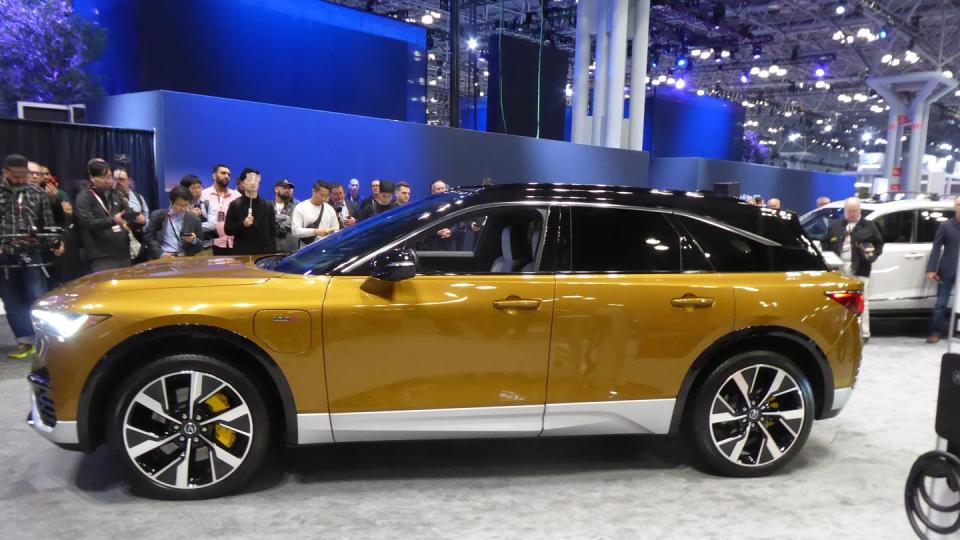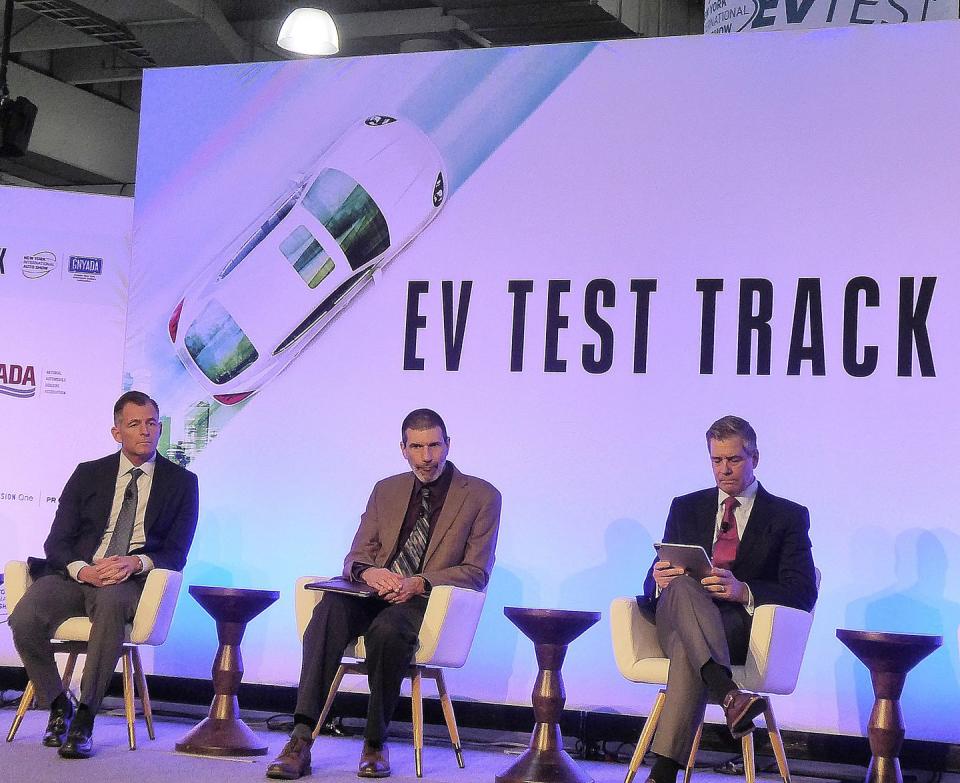Goldilocks Finds the Current EV Market Too Hot, Too Cold, and Just Right

NADA’s Mike Stanton says his organization is highly skeptical that consumers will adopt EVs anywhere near the levels required by the latest EPA rules.
Automaker lobbyist John Bozzella sees the automotive future as fully electric, without question, and says President Biden’s adjustments were needed to “give EV demand more time to kick in.
Climate activist Dan Becker thinks the EPA’s final rules are, well, too cold, and will cede EV market share to Chinese manufacturers.
At a recent New York International Auto Show forum, Mike Stanton, president of the National Automobile Dealers Association, said the Environmental Protection Agency rules for electric cars, though relaxed from initial proposals, are “not attainable, and don’t fit consumer demand.” He added that “Americans don’t like to be told what to do” and that “the car is a symbol of freedom.”
In a statement to Autoweek, Stanton said the Biden administration’s final rules remain “too aggressive.” He said, “Our experience working with consumers every day makes us highly skeptical that consumers will adopt EVs anywhere near the levels required. The charging infrastructure is not ready, the current incentives are not sufficient, and high EV prices will price out millions of consumers, particularly low-income Americans, from the new-car market.”
At the same auto show event, John Bozzella, president and CEO of the Alliance for Automotive Innovation, took a more moderate tone. Representing automakers, he said simply that “there’s no question that the future is electric,” but added that the growing EV market is “spiky,” and that Biden’s adjustments were needed to “give EV demand more time to kick in.
What automakers are trying to do is exponentially harder than what was done before.” Moderating the pace of EV adoption between 2027 and 2030 was “the right call,” Bozzella said.
To borrow from the Three Bears, Stanton and the dealers say the EPA’s EV porridge is too hot, and Bozzella and at least some of his member automakers think it’s just right. But another voice, Dan Becker, director of the Center for Biological Diversity’s Safe Climate Transport Campaign, thinks those final rules are, well, too cold, and will cede EV market share to the Chinese.
“If American manufacturers fail to make EVs, then nobody should be surprised that [leading Chinese EV producer] BYD decides to sell to the American market and takes jobs and profits back to China,” Becker said. “The Chinese will build factories in Canada, in Mexico, and wherever they can. It’s not doing Detroit a favor to help its automakers not make EVs.”

Indeed, after BYD, now the world’s leading EV producer, said it would build a plant in Mexico, protectionist pressure started heating up. BYD said the Mexican EVs aren’t headed to the US, but many politicians and the Alliance for American Manufacturing trade group are skeptical. The Alliance called for “exclusionary tariffs on all Chinese automobile imports to the United States, including both electric vehicles and internal-combustion engine vehicles.”
Donald Trump recently said, “Biden’s all-electric mandate is by very stupid people. They don’t go far, they cost too much, and they’re all going to be made in China.”
Is it possible that a combination of protectionist policies and relaxed (or no) EPA rules would increase the chances that the US EV market will be dominated by the Chinese? It seems likely. But the alarmist reports about Chinese EVs may be a bit premature, says Sam Abuelsamid, principal analyst for transportation and mobility at Guidehouse Insights.
“The Chinese automakers, while trying to expand outside China, have been focusing more on Europe and Latin America,” Abuelsamid said. “There’s a lot more immediate opportunity for them in those markets. I do think we’ll see the Chinese brands trying to break in, but it’s not imminent. I think it will happen near the end of the decade.” Abuelsamid also points out that Chinese EVs will have to be built to US safety standards, and that means they’ll likely no longer have the eye-popping low prices seen on EVs in China and Mexico.

 Yahoo Autos
Yahoo Autos 